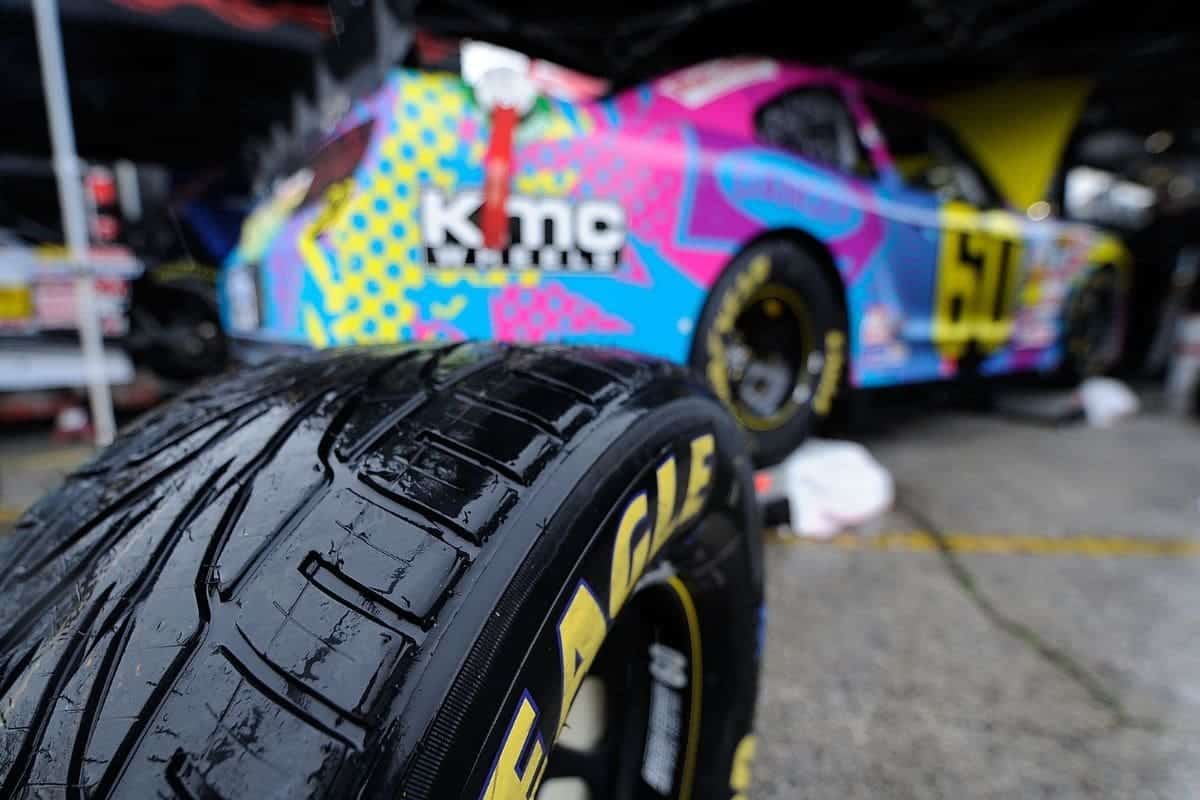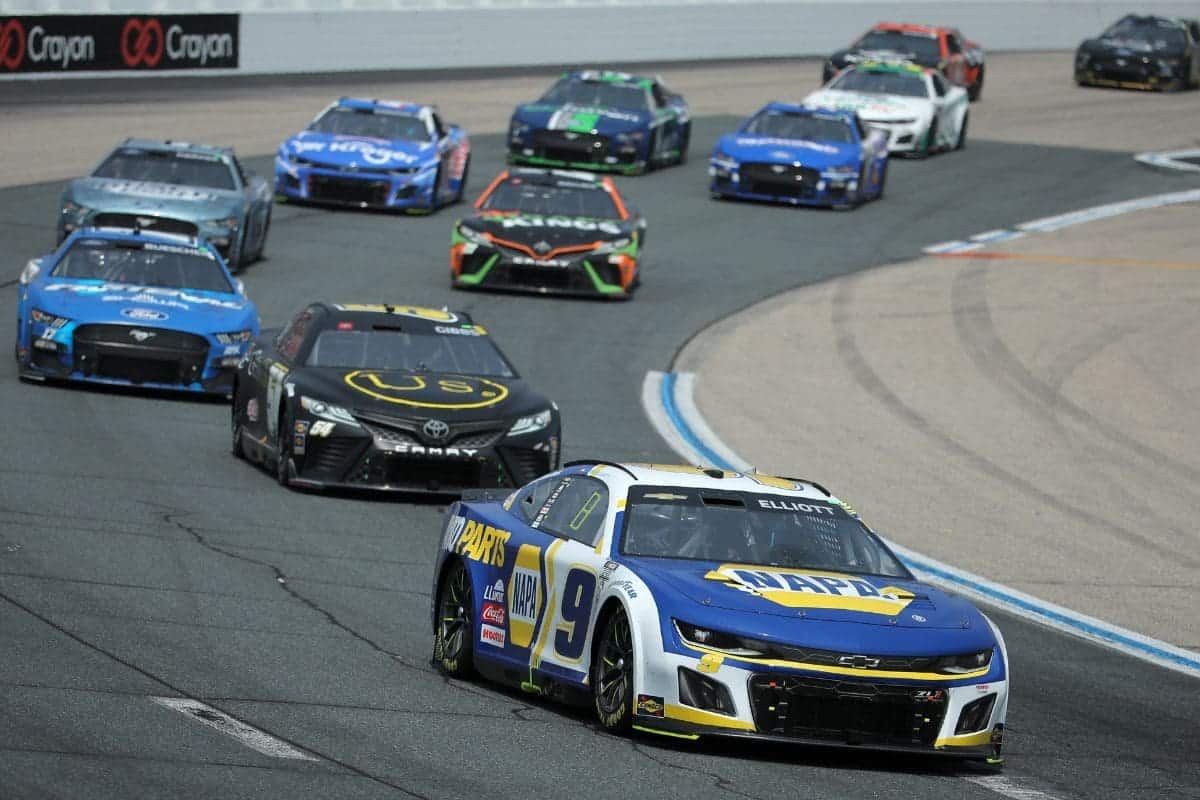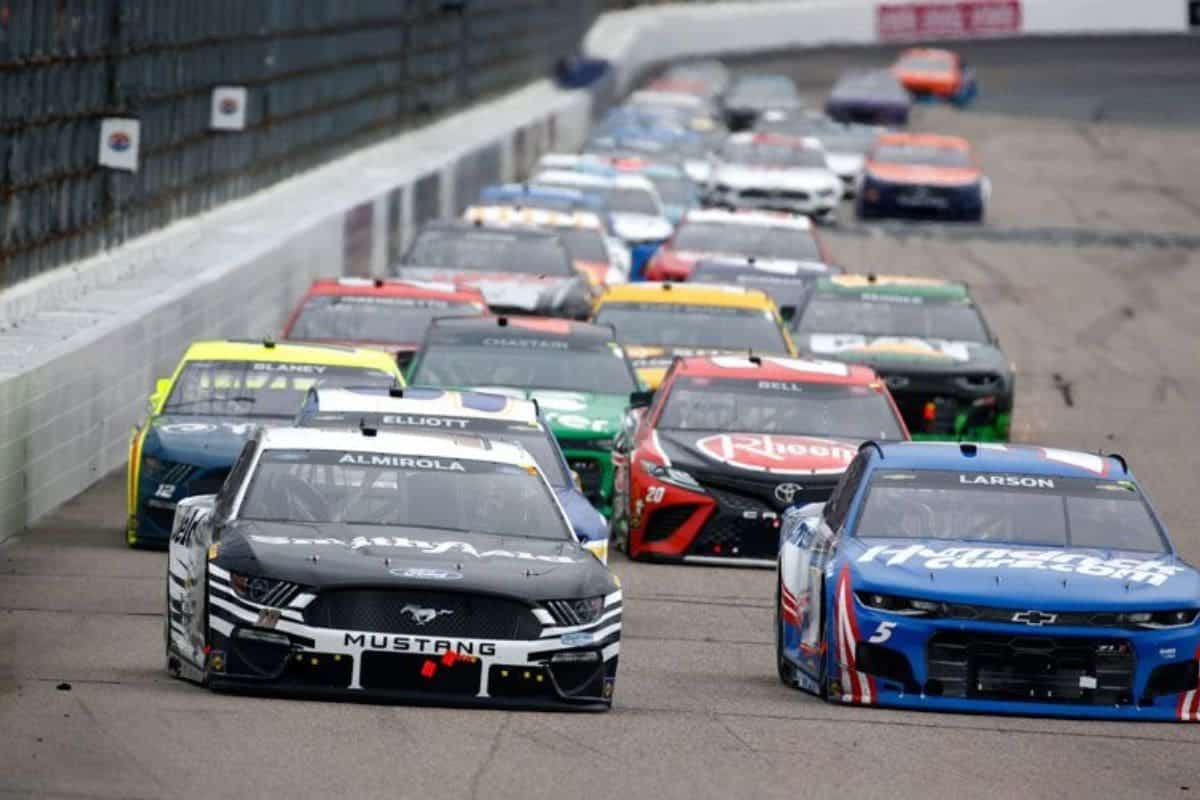Elton Sawyer Hails Very Successful Wet Race: Elton Sawyer, NASCAR’s senior vice president of competition, commended the ‘very successful’ deployment of wet weather tires at New Hampshire Motor Speedway. The event marked a crucial moment for NASCAR, showcasing the new tire strategy designed to maintain race continuity and safety in adverse weather. The Xfinity Series and Cup Series both demonstrated the effectiveness of the specialized Goodyear tires, which guaranteed uninterrupted racing despite the wet conditions. This initiative also tested drivers’ adaptability and team’s strategic planning. The development holds significant implications for future races and the general evolution of NASCAR’s approach to weather-related challenges.
Key Highlights
- Elton Sawyer praised the effective use of wet weather tires at New Hampshire Motor Speedway.
- Wet weather tires ensured uninterrupted race continuity despite adverse conditions.
- Safety was significantly improved, reducing risks on wet tracks.
- The strategic use of wet tires maintained race schedules and minimized weather-related interruptions.
- Fan engagement was enhanced by reducing rain delays and sustaining race interest.
NASCAR’s Wet Weather Tire Initiative
NASCAR’s Wet Weather Tire Initiative, introduced in 2023, represents a strategic move to reduce rain delays and improve race scheduling flexibility on ovals. This initiative highlights NASCAR’s commitment to innovation and adaptability in the face of unpredictable weather conditions, a perpetual challenge for the sport.
By equipping their vehicles with specialized wet weather tires, NASCAR aims to mitigate the disruptions that rain imposes on race day schedules, ensuring a more consistent and engaging experience for fans and participants.
The wet weather tires, developed in collaboration with Goodyear, feature a unique tread pattern and rubber compound designed to provide excellent grip on slick surfaces. This advancement allows races to proceed even under light to moderate rain, a scenario that previously might have led to significant delays or postponements.
NASCAR’s decision to implement these tires on ovals, traditionally more susceptible to rain-induced interruptions than other track types, marks a significant departure from past practices where rain typically meant an immediate halt to racing activities.
Moreover, the initiative enriches the strategic dimension of the sport. Teams now need to adapt their race strategies to accommodate the variable conditions that wet weather presents. This shift not only tests the drivers’ skill and adaptability but also places a premium on team coordination and real-time decision-making.
Successful Implementation at New Hampshire
The recent races at New Hampshire Motor Speedway exemplified the successful implementation of the wet weather tire strategy, showcasing its capability to maintain race continuity under adverse conditions. Both the Xfinity Series race on Saturday and the Cup Series race on Sunday demonstrated the effectiveness of these specialized tires.
The Xfinity Series race commenced under wet conditions, requiring drivers to start on wet tires. This proactive measure guaranteed safety and preserved the competitive nature of the event. The Cup Series faced a mid-race switch to wet tires due to unexpected showers, with the final 82 laps completed without interruption.
This strategic implementation emphasizes NASCAR’s commitment to innovation and adaptability. By deploying wet weather tires, NASCAR not only maintained the integrity of the races but also improved safety for drivers under challenging conditions. The swift and seamless adjustment to these tires during the Cup Series race is a proof of the preparedness and efficiency of NASCAR’s operational protocols.
NASCAR’s Perspective on Success
Elton Sawyer, NASCAR’s senior vice president of competition, commended the successful deployment of wet weather tires, highlighting their role in maintaining race schedules and reducing weather-related interruptions. This strategic innovation emphasizes NASCAR’s dedication to improving the racing experience for all the drivers and fans by ensuring that races proceed as planned despite challenging weather conditions.
“I think the way we started this whole wet weather tire process was, basically, we wanted to get our races started on time. It really played into our hand yesterday to get the Xfinity race started on time, and to get our races back to green as quick as possible if we had a delay, which we had today.” – (Sawyer)
The introduction of wet weather tires enabled NASCAR to adhere to race schedules more consistently. This decrease in delays is vital for upholding the integrity of the sport and ensuring that fans receive the complete race day experience without unnecessary interruptions.
“Kudos to Goodyear. This was Jim France’s vision of what wet weather tires could do. We ran 301+ laps today, went into overtime. Our fans that bought a ticket got to see some great, exciting racing.” – (Sawyer)
By equipping cars with tires designed for wet conditions, NASCAR significantly reduced the risks associated with racing on a wet track. This proactive measure not only prioritizes driver safety but also upholds the competitive nature of the races, as drivers can maintain higher levels of performance under adverse weather conditions.
Rain delays can dampen fan enthusiasm and disrupt the viewing experience as a whole. By minimizing these interruptions, NASCAR can sustain higher levels of fan engagement and satisfaction, which are essential for the sport’s growth and popularity.
Challenges and Adjustments
For fans of other series like Formula 1 and the NTT IndyCar Series, where changing between wet and dry tires happens during the race, NASCAR’s approach might seem unusual. NASCAR says it is being careful as it learns. Sunday’s race was only the third time the Cup Series used wet tires, with the first two being the 2023 All-Star Race at North Wilkesboro Speedway and a race at Richmond Raceway this spring.
“There’s still some things that we’re learning through this process. In all honesty, we’d like to be out of the tire business. We’d like to just turn that over to the teams, but we continue to take small steps and we learn. Eventually we’ll get there; we just want to do this in the safest way possible.” – (sawyer)
The mandated pit stops can disrupt race strategies, compelling teams to adopt a more reactive approach rather than the proactive strategies seen in other motorsports. This can lead to an increased emphasis on pit crew efficiency and coordination, as the timing of these stops becomes critical. Moreover, the unpredictability of weather conditions can compound these challenges, necessitating split-second decision-making that balances immediate performance with long-term race positioning.
“Once we get back to the R&D Center, we start downloading exactly how this race unfolded” Sawyer later added. ”We’ll get back and we’ll look at all the things that transpired today and if we should have got on dries. The more we looked at it, I think staying on wets was the right decision to end the race.” – (sawyer)
Moreover, the enforced pit stops for wet tires can potentially skew competitive balance. Teams with superior pit crews may gain an undue advantage, while those less adept in this area could find themselves at a disadvantage despite having otherwise competitive cars and drivers. This could lead to a reevaluation of training regimes and pit crew compositions across the board, as teams seek to optimize their performance under these new conditions.
The logistical demands of implementing wet weather procedures also extend to track safety and maintenance. NASCAR must make certain that tracks are adequately prepared to handle sudden weather changes, which includes efficient drainage systems and clear communication protocols.
Future Considerations and Conclusion
Looking ahead, NASCAR is evaluating how to best integrate wet weather tire strategies to empower teams with greater autonomy in decision-making. This initiative marks a significant shift from the current model, where NASCAR officials largely dictate tire choices in wet conditions. By evolving to a team-driven approach, NASCAR aims to enrich the strategic depth of races and the general viewing experience.
NASCAR is investing in advanced tire technology to guarantee reliability and performance under varying weather conditions. This will allow teams to make more informed and detailed decisions about tire usage.
Teams will require thorough training to adeptly handle wet weather scenarios. This involves simulations, data analytics, and real-time decision-making drills to optimize performance.
NASCAR will need to revise its regulatory framework to accommodate this shift, ensuring fairness and safety while maintaining competitive integrity.
“If you go back and look at the reason we came up with this and we started working through it with the teams and the folks at the R&D Center, it was to do exactly what we did yesterday in the Xfinity race and what we did today with the Cup race. So yes, very successful.” – (sawyer)
News in Brief: Elton Sawyer Hails Very Successful Wet Race
The successful implementation of NASCAR’s Wet Weather Tire Initiative at New Hampshire marks a significant milestone, demonstrating adaptability to challenging conditions.
This initiative’s efficacy highlights NASCAR’s commitment to enhancing race safety and competitiveness amidst adverse weather. Addressing challenges and making necessary adjustments have paved the way for further innovations.
Future considerations will certainly refine these efforts, solidifying the framework for wet weather racing and potentially transforming the sport’s approach to inclement conditions.
ALSO READ: Elton Sawyer Discusses Iowa Track Repavement After Blaney’s Win



